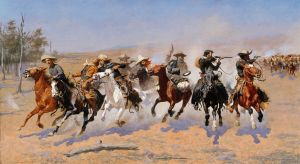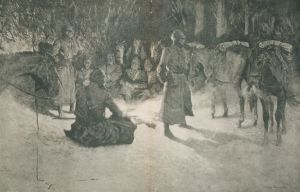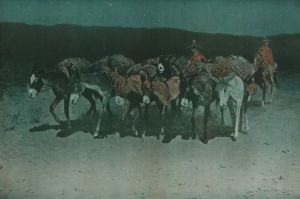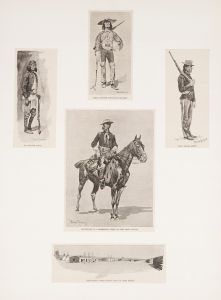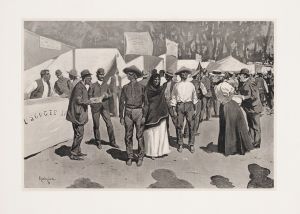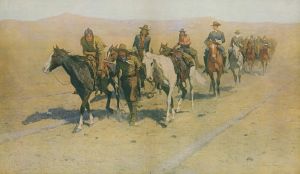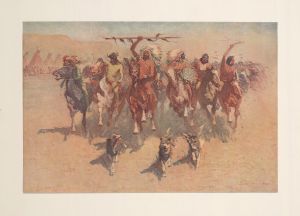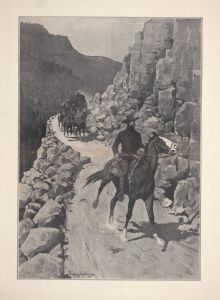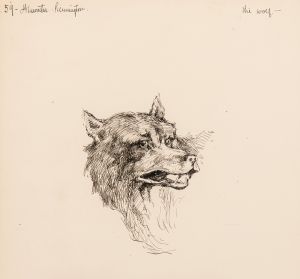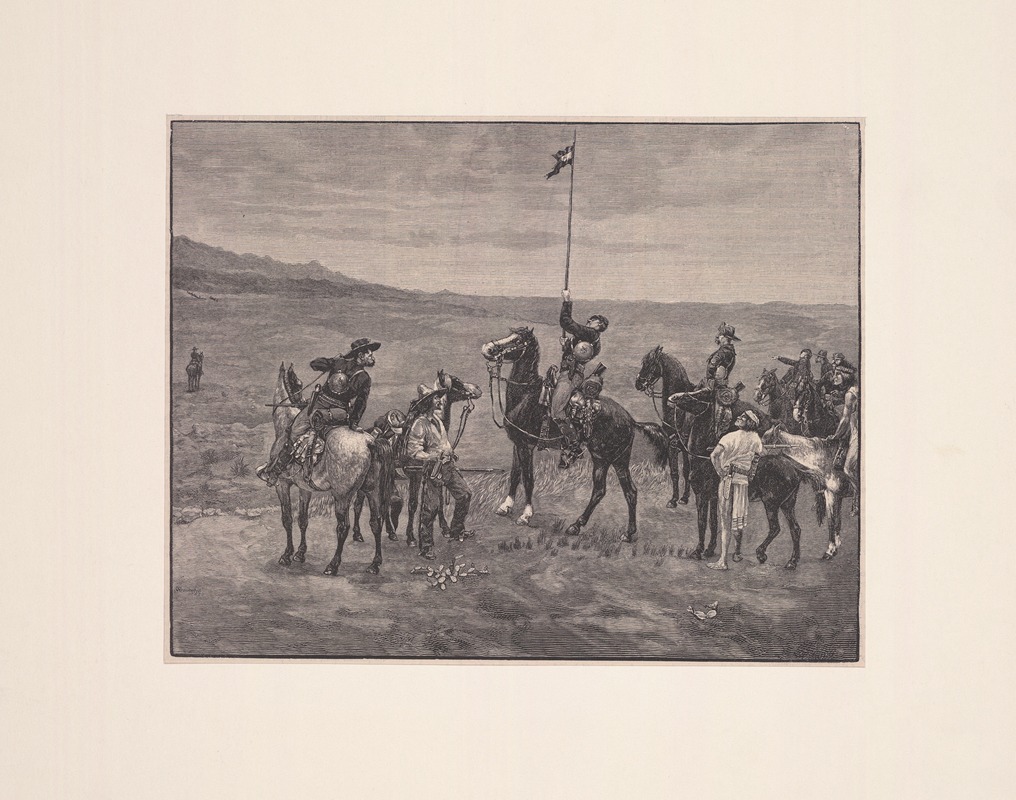
Signaling the main command
A hand-painted replica of Frederic Remington’s masterpiece Signaling the main command, meticulously crafted by professional artists to capture the true essence of the original. Each piece is created with museum-quality canvas and rare mineral pigments, carefully painted by experienced artists with delicate brushstrokes and rich, layered colors to perfectly recreate the texture of the original artwork. Unlike machine-printed reproductions, this hand-painted version brings the painting to life, infused with the artist’s emotions and skill in every stroke. Whether for personal collection or home decoration, it instantly elevates the artistic atmosphere of any space.
"Signaling the Main Command" is a painting by the renowned American artist Frederic Remington. Created in 1902, this artwork is an exemplary piece that showcases Remington's deep interest in the American West and the military life of the United States during the late 19th and early 20th centuries.
Frederic Remington (1861-1909) was an influential painter, illustrator, sculptor, and writer who specialized in depictions of the Old American West. His works often featured cowboys, Native Americans, and the U.S. Cavalry, capturing the rugged and adventurous spirit of the frontier. Remington's art is celebrated for its dynamic compositions, attention to detail, and ability to convey the intense atmosphere of the scenes he portrayed.
"Signaling the Main Command" is a vivid representation of a moment in military communication. The painting depicts a group of cavalry soldiers in the midst of a vast, open landscape. One soldier is prominently positioned, raising his arm to signal to the main command, presumably using a visual signal method common in military practices of the time. The other soldiers and horses are arranged in a way that suggests readiness and alertness, emphasizing the disciplined and organized nature of the cavalry.
The use of light and shadow in the painting is particularly notable. Remington skillfully employs these elements to create a sense of depth and realism, highlighting the figures against the expansive backdrop. The colors are muted yet rich, reflecting the natural tones of the Western environment. The artist's attention to the details of the soldiers' uniforms and equipment further adds to the authenticity of the scene.
Remington's work was heavily influenced by his personal experiences and extensive travels in the American West. He spent considerable time observing and sketching the life and activities of the U.S. Cavalry, which allowed him to create accurate and compelling representations in his art. His dedication to realism and his ability to capture the essence of the Western frontier made him one of the most important artists of his time.
"Signaling the Main Command" is part of Remington's larger body of work that documents and romanticizes the American West. His paintings, illustrations, and sculptures have played a significant role in shaping the popular image of this period in American history. Today, Remington's works are held in high regard and are featured in numerous museums and collections, including the Frederic Remington Art Museum in Ogdensburg, New York.
In summary, "Signaling the Main Command" is a quintessential example of Frederic Remington's artistic legacy. It captures a moment of military life with precision and emotion, reflecting the artist's profound connection to the American West and his exceptional skill in bringing its stories to life through his art.





